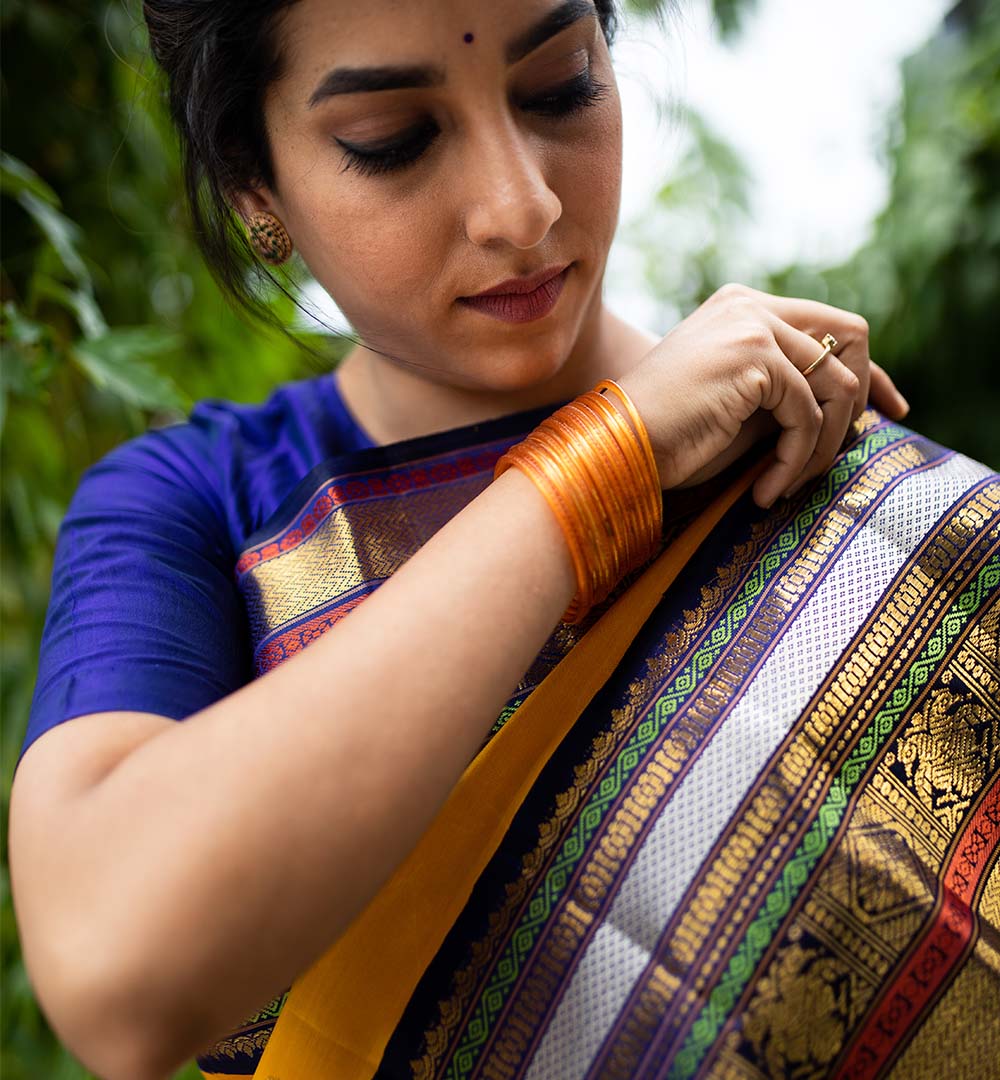Vastrabhushana
Vastrabhushana- The Evergreen Romance Of Sarees And Bharatnatyam.
Bharatnatyam, a dance form that has become the face of South Indian art and tradition, has several memories and anecdotes attached to it. Be it the dance classes we attended as children or watching Padmini and Shobana dance gracefully to evergreen songs in old films, the art has penetrated and has left an impact on our culture. But was it the same a century ago? No. Like every great art form that has become a huge part of our identity now, Bharatnatyam also had to go through a tough time and emerge triumphantly. To understand the art better, we need to travel back in time to the era that gave us Rukmini Devi Arundale. The founder of Kalakshetra, and the connoisseur of the new age Bharatnatyam.
Bharatnatyam was first called Sadhir, a dance form performed by the devadasis at temples due to several difficulties during the British era the art saw a downfall, until the day Rukmani Devi, saw a stupendous Bharatnatyam Performance at Music Academy, and that was the day the revolution began. Along with the art form, that was once called Sadhir the evolved and became abhinaya and finally got its name Bharatnatyam, the costume of the dancers also evolved. Back in the times, Dancers would drape, finely woven Kanjeevaram brocades in bright colours and golden zari borders, in the Kancham style of draping with their Pallu, pleated like a fan and tucked in their waist. They accentuated these bright sarees with kemp temple jewellery, which gave the spectators from all parts of the world a glimpse of the work of our master craftsmen. When Rukmani Devi came into the picture, this style of completely draping the Saree evolved and became a stitched set of costumes.
Rukmani along with her Italian seamstress Madam Czan came up with a design that retained the charm of the beautiful Kanchipuram silk saree and was more comfortable and decent to wear for the artists. Despite all the changes that the traditional Bharatnatyam costume went through, the one thing that was passed on from one great artist to another, generation to another was the classic Kanchipuram saree. Brocade was not only a classic choice but a great fabric to be used to accentuate a woman’s beauty, and to make the artist on the stage look more prominent and visible with the bright lighting. The saree has not only become an inevitable part of the Bharatnatyam culture but has also become a cultural ambassador for South Indian weaving heritage.



